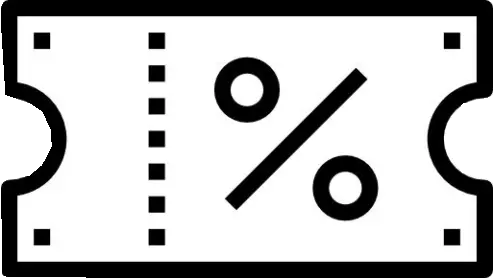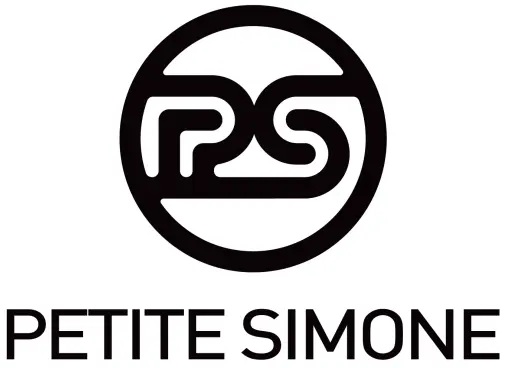HOME GUIDES HOW IS VEGAN LEATHER MADE
How Is Vegan Leather Made
Written by Erin Sullivan
Vegan leather, as the name suggests, is a leather alternative that contains no animal products. It meets the demand for the look and feel of animal leather while offering environmental and sustainability benefits.

As environmental awareness grows, vegan leather is becoming increasingly popular in the fashion and manufacturing industries.
Compared to traditional animal leather, the production of vegan leather is more environmentally friendly and its performance is gradually approaching, and even surpassing, that of animal leather.
Raw Material Selection for Vegan Leather
Use of Natural Fibers
Natural fibers like cotton, linen, and bamboo are key materials in vegan leather production.
These fibers are widely available, renewable, and biodegradable. When creating vegan leather, these natural fibers undergo special processing to impart flexibility and durability to the final product.
Cotton is renowned for its softness and moisture absorption, while linen is valued for its strength and antibacterial properties. Bamboo fibers, known for their rapid growth and eco-friendliness, are widely used in various vegan materials.
Synthetic Material Choices
In the production of vegan leather, synthetic materials such as polyurethane (PU) and polyvinyl chloride (PVC) play a significant role.
Through advanced chemical synthesis, these materials can mimic the texture and appearance of animal leather.
PU leather is highly regarded for its softness, breathability, and environmental friendliness, whereas PVC leather is valued for its durability, ease of cleaning, and low cost.
By adjusting different formulations and techniques, these synthetic materials can be tailored to provide various tactile and visual effects, catering to diverse market needs.
Innovative Use of Eco-friendly Materials
As technology progresses, an increasing number of eco-friendly materials are being applied in vegan leather production.
For instance, fruit leather made from agricultural by-products like apple and grape skins not only reduces waste but also introduces new material sources for vegan leather.

There is also mycelium leather, made from fungal threads, which offers a unique texture while reducing carbon emissions during production.
Additionally, the innovative use of natural materials such as seaweed and coconut shells is opening new avenues for vegan leather development.
Basic Steps in Vegan Leather Production
Material Preparation and Processing
In the production of vegan leather, material preparation and processing are crucial steps.
Natural fibers need to be cleaned, combed, and woven to ensure purity and uniformity. Synthetic materials undergo chemical reactions and physical processing to meet the required performance standards.
Both natural fibers and synthetic materials must pass stringent quality inspections to ensure they meet environmental and usage requirements.
Fiber Weaving and Synthesis
Fiber weaving and synthesis are central to vegan leather production.
Different weaving methods can create substrates with specific structures and strengths. In the synthesis process, adding various additives and fillers can enhance material functionality, such as waterproofing, breathability, and abrasion resistance.
Modern technological advancements have made fiber weaving and synthesis techniques increasingly precise and efficient, providing technical support for the diversified development of vegan leather.
Coating and Dyeing Techniques
Coating and dyeing are critical steps in giving vegan leather its final appearance and performance.
Different types of coatings can impart gloss, matte, texture, and other effects to the leather. Dyeing techniques allow vegan leather to display a rich array of colors, satisfying various consumer aesthetic preferences.
Modern coating and dyeing technologies not only enhance the aesthetic appeal of vegan leather but also improve its durability and environmental performance.
Technical Details of Vegan Leather Production
Use of Non-toxic Chemicals
The application of non-toxic chemicals is vital in vegan leather production.
These chemicals must ensure product safety while being environmentally friendly. For example, using non-toxic and harmless dyes and additives in the dyeing and coating processes can reduce environmental pollution.
Furthermore, adopting green chemical processes during fiber treatment and synthesis can minimize the production of harmful substances, further enhancing the eco-friendliness of vegan leather.
Selection of Efficient Production Equipment
Efficient production equipment is key to ensuring the quality and productivity of vegan leather.
Modern production equipment can not only speed up production but also precisely control each stage of the process, ensuring product consistency and stability.
For instance, high-efficiency fiber weaving equipment can accurately control fiber density and structure, while advanced coating and dyeing equipment can achieve uniform and stable processing effects.
Combining Innovative Techniques with Traditional Methods
The combination of innovative techniques with traditional methods is an essential means of improving the quality of vegan leather.
Traditional leather-making techniques have developed over centuries, accumulating a wealth of experience and craftsmanship. Modern technological advancements inject new vitality into these traditional methods.
For example, CNC technology allows for precise and automated control of traditional techniques, while the application of new materials enhances the environmental and functional properties of traditional processes.
Environmental Advantages of Vegan Leather

Environmental Benefits of Reducing Animal Leather Use
The most significant environmental advantage of vegan leather is reducing the use of animal leather, thereby lessening harm to animals and environmental pollution.
Traditional animal leather production requires large amounts of water and chemicals, with the resulting wastewater and emissions causing severe environmental damage.
In contrast, the production of vegan leather is more environmentally friendly, reducing the consumption of natural resources and lowering environmental pollution.
Resource Conservation and Sustainable Development
The production of vegan leather contributes to resource conservation and promotes sustainable development.
By utilizing renewable resources like natural fibers and agricultural by-products, dependency on non-renewable resources can be reduced.
Additionally, the application of green chemistry and efficient production technologies enhances resource utilization efficiency, reduces waste generation, and advances industry sustainability.
Recycling and Reusing Vegan Leather
The recycling and reusing of vegan leather are key to its environmental benefits.
Since its primary materials are natural fibers and biodegradable synthetic materials, vegan leather can be recycled and reused at the end of its life cycle, reducing its environmental footprint.
Through advanced recycling technologies, discarded vegan leather products can be transformed into new raw materials for continued production, forming a circular resource utilization system.
FAQ
1.How durable is vegan leather?
The durability of vegan leather largely depends on the materials used and the production process.
High-quality vegan leather typically uses durable synthetic fibers and advanced coating technologies, providing good durability for daily use.
However, some vegan leathers may exhibit lower durability under extreme conditions compared to traditional animal leather. Continuous improvement in material formulations and production techniques has significantly enhanced modern vegan leather's durability, meeting the needs of most consumers.
2.What are the environmental advantages of vegan leather?
Vegan leather has notable environmental advantages.
First, its production process does not involve animals, reducing harm to animals and the environmental pollution associated with animal farming.
Second, the chemicals used in vegan leather production are mostly non-toxic and biodegradable, minimizing negative environmental impacts.
Additionally, many vegan leather materials can be recycled and reused, further reducing resource waste and environmental pollution.
3.How should vegan leather products be maintained?
Maintaining vegan leather products is similar to maintaining traditional leather products.
First, avoid exposing vegan leather products to high temperatures, high humidity, or direct sunlight to prevent material aging and deformation.
For daily cleaning, gently wipe with a damp cloth and avoid using cleaners with strong chemicals to prevent damage to the material's surface. For stubborn stains, use specialized vegan leather cleaners.
Regular maintenance can extend the lifespan of vegan leather products and keep them looking good and performing well.
4.How breathable and comfortable is vegan leather?
The breathability and comfort of vegan leather mainly depend on the types of materials used and the production techniques.
High-quality vegan leather often uses breathable synthetic and natural fibers, providing good breathability and comfort.
While some vegan leathers may be slightly inferior in breathability compared to traditional leather, technological improvements have made significant progress in this area, meeting the comfort expectations of most consumers.
5.What is the market outlook for vegan leather?
With growing environmental awareness and increasing demand for sustainable products, the market outlook for vegan leather is very promising.
More fashion brands and manufacturers are turning their attention to vegan leather and applying it across various products. From footwear and bags to furniture and car interiors, the application scope of vegan leather is expanding.
Moreover, with technological advancements, the quality and performance of vegan leather are continually improving, driving market demand and development. In the future, vegan leather is expected to become a vital component of the eco-friendly and fashion industries.

.webp)













